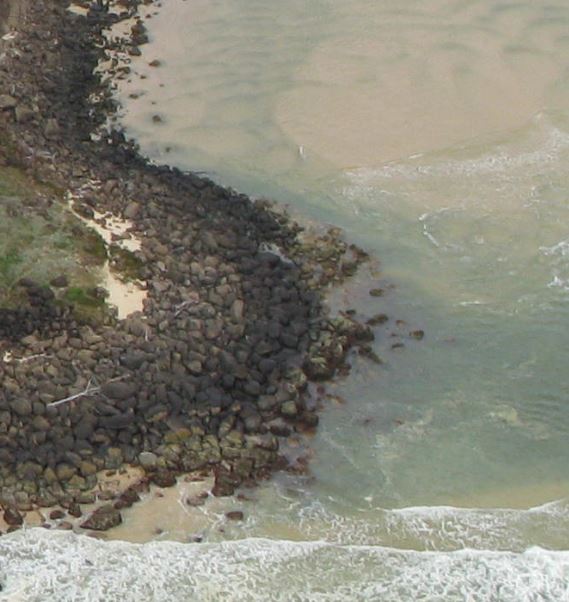|
|
Intertidal unknown energy over bouldersShort descriptionIntertidal boulder substrate where data is not available for energy. Disclaimer: Ecosystem type descriptions are based on biophysical attributes identified in Central Queensland through expert advice and supported by scientific literature. Not all ecosystem types are mapped based on current inventory, and many of the ecosystems described here may also occur in other parts of Queensland.
Classification categoriesSelect from the links below to view related ecosystem type categories Long descriptionBoulder substrate where data is not available for the energy level. May have similar values to low energy (type 35) or high energy boulders (type 34) depending on energy. Refer to these types for detailed discussion of each. Generally, boulders are defined as exceeding 25.6cm in diameter, of any Substrate composition, and can include terrigenous origin (i.e. fragmented rock or coffee rock) or carbonate origin (e.g. larger coral rubble). They can be either adjacent to consolidated intertidal or subtidal ecosystems, or exist in isolated patches. Boulders result from a wide variety of erosion processes on land and in the sea, and many factors influence how they break down from parent rock or pavement etc. For example, boulders may occur beneath high wave energy ecosystems, where platforms have been subject to wave action and broken down into fragments on the sea floor. On coral platform boulders may be thrown across the reef by cyclone action. Intertidal boulders may also occur within estuaries and rivers where riverine flow has eroded down geological formations. More friable substrates such as coffee rock may break off steep-sided cliffs to fall into intertidal areas. The Substrate composition and its Lithology will determine the size and shape of the boulders, influencing how they break away from parent material and the structural complexity of the terrain, i.e. the Terrain roughness. Special valuesMore microhabitats and possibly fauna diversity than on consolidated substrates, in the form of crevices, pools, variations in energy. This ecosystem type could potentially include fish traps (see Type 24 and Additional Information). Diagnostic attributesInundation 'Intertidal – Lower low', 'Intertidal – Mid low', 'Intertidal – Upper low', 'Intertidal – Low undifferentiated', 'Intertidal – Lower medium', 'Intertidal – Upper-medium', 'Intertidal – Medium undifferentiated', 'Intertidal – High', 'Intertidal – Undifferentiated', 'Intertidal – High undifferentiated' Sediment texture 'Boulders' Energy magnitude 'Unknown' QualifiersCan also include modified ecosystem types such as intertidal parts of boat ramps, jetties and port infrastructure. The biota growing on these ecosystems would be very different from that growing on natural rocky or coffee rock ecosystems. The attributes of Consolidation, Substrate grain size and Inundation may be modified by fish traps. DistributionK'gari (Fraser Island) and the Great Barrier Reef form a barrier to wave energy at a regional to national scale[1]. The northern-most limits of high energy rocky shorelines along the Queensland coast are K'gari and Double Island Point. The following relates to distribution of this ecosystem type within the Central Queensland mapping area:
CommentsRelevant additional attributes include Substrate composition, Energy source and magnitude and Lithology. Additional InformationRocky shore - Queensland Government Intertidal rocky shores - Queensland Museum Intertidal rocky shores - Museum of Tropical Queensland Indigenous Fish Traps and Weirs of Queensland References
Last updated: 11 July 2019 This page should be cited as: Department of Environment, Science and Innovation, Queensland (2019) Intertidal unknown energy over boulders , WetlandInfo website, accessed 25 June 2024. Available at: https://wetlandinfo.des.qld.gov.au/wetlands/ecology/aquatic-ecosystems-natural/estuarine-marine/descriptions/39/ |

 — Department of Environment, Science and Innovation
— Department of Environment, Science and Innovation


